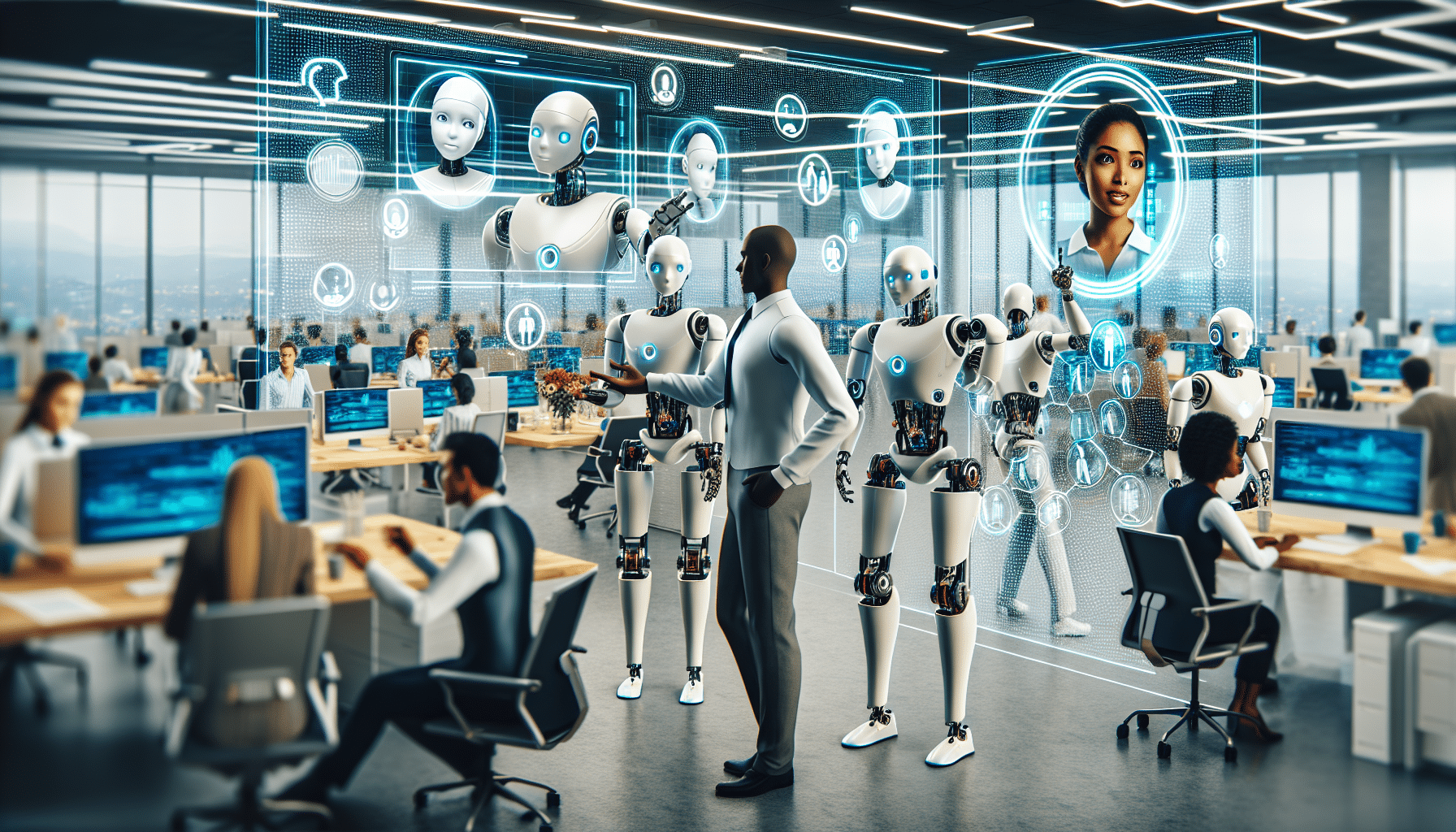Ads
Today, the labor market is undergoing an unprecedented transformation due to the increasing incorporation of humanoid robots into various sectors. These robots are revolutionizing the way certain tasks are performed and changing traditional work dynamics.
Humanoid robots are being designed to perform a wide variety of functions, from repetitive and dangerous jobs to more complex roles requiring advanced cognitive skills. This is sparking a debate about their impact on job creation and elimination in the future.
Ads
As technology advances and robots become more sophisticated, it is critical to analyze how this revolution will affect current and future workers. It is important to consider the opportunities that may arise with the implementation of humanoid robots, as well as the challenges that could arise in terms of unemployment and the replacement of human workers.
In this article, we'll explore in-depth how humanoid robots are transforming the labor market, the benefits and challenges this entails, and what we can expect in terms of workforce changes in the near future. Join us on this journey into the future of work!
Ads
The Workforce Revolution: How Humanoid Robots Will Transform the Job Market
Technological advances in artificial intelligence and robotics have been revolutionizing the way we work and live. In particular, humanoid robots are emerging as a disruptive force in the labor market, transforming the way we perform tasks and interact in the workplace. In this article, we will explore how the arrival of humanoid robots is changing the dynamics of the labor market and what impact it may have on workers and society at large.
Below is an expanded analysis on the topic:
As humanoid robots become integrated into work environments, their presence is becoming evident in diverse industries, from manufacturing and logistics to service and customer service. These robots, with advanced perception and learning capabilities, are redefining the way repetitive and dangerous tasks are performed, allowing workers to focus on tasks that require creativity and empathy. Furthermore, the incorporation of humanoid robots favors improved efficiency and productivity, as they can operate continuously and without interruptions, reducing downtime and optimizing production processes.
However, this change also raises questions about the future of employment and the impact on the workforce. Many experts debate the possible redistribution of jobs, with certain routine tasks becoming completely automated, while the demand for technical and specialized skills increases in areas such as programming, maintenance, and supervision of robotic systems. Worker adaptation and training become crucial factors to ensure a successful transition to this new era of work. Educational institutions and companies must collaborate to offer training programs that prepare employees to face the challenges of a changing market.
On the other hand, the implementation of humanoid robots raises ethical and social issues that require attention. Regulatory frameworks and public policies must be established to ensure the fair and balanced integration of automation into the workplace. Protecting workers' rights and ensuring decent working conditions must be priorities in this process of technological change. Ultimately, the arrival of humanoid robots promises to transform the labor market, offering both growth opportunities and significant challenges that society must jointly address.
Related publications:
The evolution of humanoid robots
Humanoid robots are machines designed to mimic human appearance and behavior. Equipped with artificial intelligence and advanced sensors, these robots can perform a variety of complex tasks that previously could only be performed by humans. From assisting in medical care to performing tasks in hazardous environments, humanoid robots are proving to be a valuable tool in a variety of fields.
Benefits of adopting humanoid robots in the labor market
The adoption of humanoid robots in the workforce offers several benefits for both employers and workers. On the one hand, robots can increase efficiency and productivity in the workplace by performing repetitive and physically demanding tasks more quickly and accurately than humans. This allows companies to save time and resources while improving the quality and consistency of results.
On the other hand, workers can benefit from collaboration with humanoid robots by freeing them from tedious and dangerous tasks, allowing them to focus on more creative and strategic activities. Furthermore, the presence of robots in the workplace can improve workplace safety by reducing the risk of accidents and injuries in hazardous environments.

Conclusion
In conclusion, the arrival of humanoid robots is revolutionizing the labor market in unprecedented ways. These machines, equipped with artificial intelligence and advanced sensors, are proving to be a valuable tool in diverse fields, from healthcare to hazardous environments. The adoption of humanoid robots in the labor market offers a number of benefits for both employers and workers.
On the one hand, robots can increase efficiency and productivity in the workplace by performing repetitive and physically demanding tasks more quickly and accurately than humans. This not only saves companies time and resources but also improves the quality and consistency of results. On the other hand, workers can benefit from collaborating with humanoid robots by freeing them from tedious and dangerous tasks, allowing them to focus on more creative and strategic activities. Furthermore, the presence of robots in the workplace can improve workplace safety by reducing the risk of accidents and injuries in hazardous environments.
In short, humanoid robots are transforming the way we work and interact in the workplace, providing new opportunities and challenges for workers and society at large. It is essential to be prepared for this change and take full advantage of the benefits that humanoid robots can offer in today's labor market.
